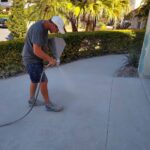You might think that cars are immune to pests, but we have some bad news to deliver. Anything can be infested with pests! The enclosed space of the car, combined with the occasional presence of food crumbs from snacking in the car, add to that moisture, and you just created the ideal environment for various creepy crawleys to thrive.
Now the good news is that the most common insects found in cars (spoiler alert!)—ants, spiders, carpet beetles—are also quite easy to prevent. If you’ve found yourself in this situation, you better soak up the next few lines. You don’t want to “impress” your partner with ants crawling around the car. So buckle up!
1. Ants
Imagine you had a picnic at a park and some sandwich crumbs fell between the seats without you noticing. A few days later, you’re likely to find trails of ants marching towards those remnants.
What Attracts Them
Ants are primarily attracted to food sources—crumbs from snacks eaten inside the car or sticky residues from spilt drinks can serve as a feast for them. Additionally, some ants may be drawn by moisture if there’s condensation or any leaks in your vehicle.
Prevention and Elimination
- Regular Cleaning: Vacuum your car interior thoroughly at least once a week. Yes, that often! Pay special attention while vacuuming around floor mats (often neglected), underneath pedals (where small particles easily lodge), cup holders (sticky drink residues), door pockets (accumulate wrappers/receipts) and trunk area too!
- Spot Treatment: Use ant baits or traps designed specifically for indoor use; place them under seats where they won’t interfere with driving. These baits work by attracting worker ants who carry poisoned bait back home—eventually eliminating entire colonies!
- Natural Repellents: Wipe down surfaces with vinegar solution; it disrupts ant scent trails. Vinegar acts doubly effective not only masking pheromone trails guiding fellow comrades but also disinfecting surfaces naturally sans harmful chemicals and odours associated with conventional insecticides.
2. Spiders
You might notice cobwebs forming around your side mirrors or beneath your dashboard—a clear sign that spiders have made themselves comfortable in those less-disturbed areas.
What Attracts Them
Spiders often enter cars seeking shelter rather than food—they’re looking for quiet places where they can spin webs undisturbed.
Prevention and Elimination
- Declutter: Keep items off the floor and avoid storing them in boxes or bags that could provide hiding spots. Regularly clean out any cluttered compartments such as glove boxes or centre consoles which may serve as potential habitats.
- Vacuuming: Regularly vacuum corners and crevices where spiders might hide. Use specialised attachments to reach deeper into these nooks; this ensures thorough removal of spider eggs along with adult spiders.
- Repellents: Use essential oils like peppermint oil mixed with water as a spray deterrent; most spiders dislike strong scents. You can mix 10-15 drops of peppermint oil with one cup of water in a spray bottle. Shake well before each use. Spray this mixture onto surfaces prone to spider activity such as door frames, around windowsills within the car interior, and even inside storage compartments.
3. Carpet Beetles
If you’ve ever noticed tiny holes appearing mysteriously on fabric seat covers or floor mats—chances are carpet beetles have been munching away unnoticed!
What Attracts Them
Carpet beetles are drawn towards natural fibres found in carpets and upholstery within cars; they feed on materials containing wool or silk blends which may be present in older vehicle interiors.
Prevention and Elimination
- Deep Cleanings: Shampoo carpets periodically using hot water extractors which help kill larvae stages embedded deep within fibres.
- Pesticides: Apply insecticide sprays with safe-for-fabric treatments targeting adult beetle populations while ensuring minimal exposure risks during application processes (wear gloves/mask).
Prevention is Better Than Treatment
When dealing with pests like ants, spiders, and carpet beetles in your car can be more than just annoying and unhygienic. In addition to being uncomfortable, these unwanted visitors could harm the car’s interior and, if left unchecked, they could also lead to costly repairs and decreased resale value. To effectively battle these common bugs, consider focusing on three main strategies: proper food storage, moisture control, and seeking help from pest control companies.
Proper Food Storage in Your Car
Food crumbs and spills are among the primary attractants for pests such as ants and carpet beetles inside vehicles. When food is left exposed or improperly stored, it provides an easy meal source for these insects.
To prevent this, we have a few pieces of advice for you:
- Avoid Eating Inside the Car: One straightforward method is to avoid eating inside your vehicle altogether. So no more takeaways eaten in the car park; munching while driving (or riding in that matter) should also be banned.
- Use Sealed Containers: If you must transport food, use sealed containers that prevent any smell or crumbs from escaping. For instance, if you’re making a road trip, of course you will have snacks like crisps or sandwiches. Instead of leaving them open on the seat where crumbs can easily fall onto surfaces or between seats, store them in airtight plastic containers until it’s time to eat.
- Detail Cleaning: Like we already mentioned this several times—make it a habit to vacuum your car regularly, especially under seats and floor mats, to remove any residual food particles. For example, after a family picnic where food was consumed in the car, properly cleaning up any spills or crumbs keeps these unwanted guests from making your vehicle their home.
- Removing Trash: Make it a habit to throw out the trash every time you get out of the car so no leftover wrappers or containers that could serve as food or pests.
Moisture Control in Your Car
Moist environments are breeding grounds for many types of pests including spiders which thrive in damp conditions.
To manage moisture:
- Fix Leaks Promptly: Ensure there are no leaks around windows or sunroofs which might allow water ingress during rainy days. Imagine noticing condensation forming inside your car after washing it; this could indicate poor sealing somewhere along window edges—addressing such issues immediately helps keep interiors dry.
- Use Dehumidifiers or Absorbent Packs: Consider placing small dehumidifiers or silica gel packs within different sections of your vehicle—they absorb excess moisture efficiently preventing mould growth too!
An example would be investing in automotive-specific dehumidifier bags available online retail stores; just place one under each seat (or other strategic locations) periodically replacing when saturated fully ensuring continued effectiveness throughout changing seasons!
Seek Pest Control Companies’ Help
Sometimes despite best efforts at maintaining cleanliness plus controlling humidity levels—you still face persistent infestations requiring professional intervention!
When seeking expert assistance:
- Identify Reputable Companies Specialising in Automotive Treatments: Look up reviews and ratings of local businesses specialising in auto-pest management services. Consult friends and family recommendations on trustworthy providers in the nearby areas before making decisions based solely on cost.
- Avoid the Cheapest Options Available: Cheaper options sometimes lack the necessary expertise and equipment to handle specific problems efficiently and thoroughly without causing further complications later down the line.
For example, if battling severe ant invasion repeatedly needing external aid frequently—it makes sense to hire someone experienced in dealing with precisely this kind of issue rather than a general exterminator unfamiliar with the intricacies involved.
Final Thoughts
Taking good care of your car goes beyond just ensuring its mechanical functionality; it also involves maintaining its cleanliness and addressing problems promptly. By doing so, you create an environment that is unwelcoming to pests and conducive to long-term vehicle health. A well-maintained exterior with routine washes not only makes your car look great but also protects the paintwork from dirt accumulation which can cause damage over time. Inside detailing keeps upholstery fresh and free from stains – imagine how much more pleasant it feels to drive a spotless vehicle on a sunny day trip with loved ones!



